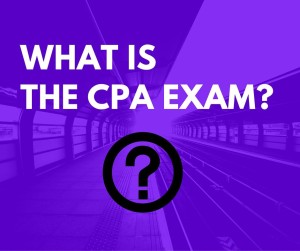 The Uniform CPA Exam is a computer-based exam comprised of four sections and is a required step in qualifying for the Certified Public Accountant (CPA) designation. The exam is administered by the AICPA and is designed to protect the public interest by ensuring that only qualified individuals become licensed as a CPA in the United States. The CPA Exam is just one component of earning a CPA license. The other licensure requirements, education and experience, vary by jurisdiction and are determined by each state’s Board of Accountancy.
The Uniform CPA Exam is a computer-based exam comprised of four sections and is a required step in qualifying for the Certified Public Accountant (CPA) designation. The exam is administered by the AICPA and is designed to protect the public interest by ensuring that only qualified individuals become licensed as a CPA in the United States. The CPA Exam is just one component of earning a CPA license. The other licensure requirements, education and experience, vary by jurisdiction and are determined by each state’s Board of Accountancy.
The exam consists of four sections:
Auditing and Attestation (AUD)
This section covers knowledge of auditing procedures, generally accepted auditing standards and other standards related to attest engagements, and ethics. The AUD section is often considered to be the hardest section of the CPA Exam because you’re not picking the correct answer in the multiple choice section, but rather the best answer. All of the answers presented may be correct, but only one is the best answer, making the choice between answers a difficult one.
Another factor that makes AUD one of the more difficult sections is that you are not tested on memorized knowledge, but are required to apply your knowledge to solve problems. The best way to prepare for AUD is to take as many sample exams as possible, giving you plenty of practice at applying your knowledge to different scenarios.
Business Environment and Concepts (BEC)
This section covers knowledge of general business environment and business concepts that candidates need to know in order to understand the underlying business reasons for and accounting implications of transactions. Many students make the mistake of thinking BEC will be the easiest of the four CPA Exam sections. In fact, this section has a pass rate of about 48%. BEC requires a broad knowledge of economics, finance, market and risk analysis, information systems, operations management, and corporate governance.
One way to prepare for BEC is to practice your writing skills. This section of the exam includes three questions requiring you to employ some form of business writing, such as a client memo. To be successful, you’ll need to be able to use relevant accounting jargon in a concise manner.
Financial Accounting and Reporting (FAR)
This section covers knowledge of generally accepted accounting principles for business enterprises, not-for-profit organizations, and governmental entities. FAR is usually considered to be one of the easiest sections for students since most of the content directly relates to their accounting education. Still, FAR is not to be taken lightly as this section covers material from financial and cost accounting as wells as governmental and nonprofit accounting. Governmental and nonprofit accounting can be up to 25% of the exam score, but these subjects are often overlooked in college accounting coursework. Be sure to thoroughly study these concepts and do plenty of multiple-choice questions and practice exams to prepare.
Regulation (REG)
This section covers knowledge of federal taxation, ethics in tax practice, professional and legal responsibilities, and business law. More than 60% of the REG exam section focuses on taxation. For candidates whose on-the-job experience has been limited to an audit department, this can be a challenging section. Again, answering as many multiple-choice questions as possible is the key to being prepared for REG.
Candidates can take any sections of the CPA Exam in any order they wish. Once a candidate passes a section of the exam, most states allow 18 months to pass the remaining three sections.

